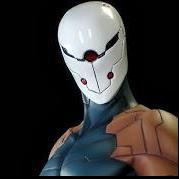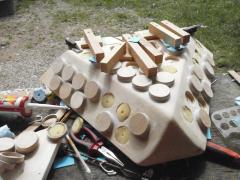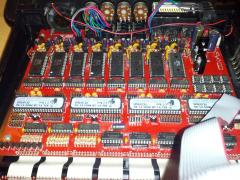-
Posts
3,633 -
Joined
-
Last visited
-
Days Won
36
Content Type
Profiles
Forums
Blogs
Gallery
Everything posted by Hawkeye
-
Finally tested and loving it :) A really cool way to "chop" your non-drum synth noodles, as well! Bye, Peter
-
Hi cshesse, He usually grants all sales requests for MIDIboxes that people have built for themselves, so I think it is really ok to go on with the sales... also I think, there is some kind of reformation of the sales rules going on, something like 10 sold MIDIboxes per person and year (to avoid commercial exploitation), but I am not into this :-). Bye, Peter
-
Please don´t underestimate the time and efforts necessary to develop your own SEQ PCB/Frontpanel and parts kit - it is a very time and cost-intensive effort! Tim/SmashTV has already invested lots of time and $$$ and provides exceptional quality, so I´d 100% recommend to go that route... just my 5cents :). Bye! Peter
-
Very nice! Please prototype it e.g. on breadboard first before producing the pcb - i am not 100% sure of the digit wirings - also, in my version i´ve omitted the resistors (direct driving leds is normally not a recommended thing to do, as there is no current limitation then, but on the other hand, the pulse is very quick and my led digits (a series of kingston single digits - for your 4-digits problem) are still very alive after many hours of usage and the brightness was increased). To realize the three step digits, I just added three more iterations to TKs bpm display loop, which slightly decreased the overall brightness a little bit (not very visible). Bye, Peter
-
Nice! They are shared! You need 1 shift register for the seven segments plus one dot per digit = 8 pins, and 1 shift register for up to 8 digits, but only 4 (bpm) + 3 (track position) are used. So you need an additional DOUTx2 (or a half populated DOUTx4). The "Wilba" standard control surface PCB has an outport port to connect more DOUTs to the DOUT chain, as far as i know. Bye, Peter
-
Hi there, the boodloader is running (the display is ok then with its bars), but the MIOS upload failed, please try another MIDI Interface, these USB-Midi cables have multiple reports of not working - maybe Wine adds another problem layer (missing menus?)... perhaps you can borrow a windows or macos-based laptop from someone and attach a device on the MIDI whitelist? As far as i know, the send delay can only be changed in the "sysex tool", which would be under Tools (in the Menu on a Windows/Mac system) - but this is only for uploading banks or patches, not .hex firmwares... (the delay setting is necessary here, as there is no back channel for .syx uploads, notifying the sending host, that the device has written the data block to flash - the standard mios uploads have a back channel, therefore no delay setting is necessary, if the MIDI interface works correctly - correct me please, if i am wrong) Bye, Peter
-
Hi, you are right, when only the bootloader is installed, the black bars will be shown, when MIOS is successfully installed, a "READY" appears (after a copyright message), when the full app is installed, the display shows the application. Probably the PICs from Mike only come with the bootloader (I thought, they would come with the newest MIOS, but I may be wrong :-)). So normally after MIOS has been uploaded, the bars should disappear: http://www.ucapps.de...ap_newbies.html It is still possible, that the upload of MIOS somehow failed, so a new MIDI device may help. Did you connect IN and OUT of your core to OUT and IN of the MIDI device? :-) If you "query" the device within MIOS studio (select the right input and output ports first), what does it show? If MIOS Studio says, that an application is up and running, the display may be connected in a wrong way, but MIOS is running. Bye and best of luck! Peter
-
Hi and welcome! As you´ve already got a preburned PIC with installed MIOS, the display should show "Ready". If it shows just a bar, maybe the brightness is too high (this problem occurs often) - it should be adjustable with a potentiometer. Next thing would be to upload the setup_8580.hex (as you did), which was interupted, maybe your MIDI interface is on the MIDI device blacklist (see wiki)? If you have any other MIDI interface available (not a cheap USB MIDI cable, these things have issues :)), try that! Bye and have lots of fun! Peter
-
You may not need to buy full 1U/2U enclosures if you go for a "closed rack box", like a flight case, as its sides and the back is already covered. In fact, you might only need 19" blends/frontpanels and attach everything behind with hex standoffs... a bit like a "modular" with its slots. Or find a way to fasten the "guts" to the back wall of the rack and just have long cables between the front panel and the PCBs... Regarding your question - I think it should be possible to add small tactile switches below a 2x20 or 2x40 LCD, that would still fit into 1U - it will be difficult with a 4 lines LCD (for the MBSID) though! Bye, Peter
-
-
Hi Tim, yes, the external BPM indicator (if needed, as you can also display the BPM on the SEQ V4 bpm screen) takes 3 or 4 LED digits, they are quite small. You could put it on a small 0.5HE/Height unit or a 1 HE/Height units units aluminum blind, which is available for very cheap on ebay, the LED digits are 17mm high, so 22,5 mm for that half height unit is enough and does not waste valuable rack space. The additional current track step display is another add-on, which takes three more LED digits and is wired up much the same like the 3 or 4 BPM digits - these digits could also go to the external panel. You need one DOUTx2 or a half populated DOUTx4 Module for these addons. Here is the corresponding thread: upper led digits: 4-digit bpm lower right led digits: 3-digit current step position display Regarding the rack itself - i´d recommend a flight case rack (google it), they are very rugged, have a handle for carrying and can hold more than 3 height units... If you are going this route with an additional 0.5HE blind for LED digits, you could fall back on the "standard 19 inch mbseqv4 panels" made from julianf or frontpanel express (also, there is less risk of something going wrong, as these are proven designs). Bye! Peter
-
Great effort, cool combo board! I like it a lot! Chaining of multiple Boards is done via DIN/DOUT J2 of the previous board to DIN/DOUT J1 of the next? If it all works out, maybe SmashTV is interested to add this PCB to his shop? Methinks a lot more people would build LED-Ring equipped MIDIboxes, when boards are easily available! Bye, Peter
-

[SOLVED] MB-6582 - Not reacting to MIDI on/off
Hawkeye replied to Blatboy's topic in Testing/Troubleshooting
Hm, PICs are quite resistant to all possible damages... You could test them one by one in the first PIC slot, if they work without problems there, it is not a PIC problem... I would guess it may be a PSU problem - especially the original C64 PSUs are sometimes overloaded when a MB6582 is fully loaded... You could measure the basic baseboard voltages when everything is powered up and when you are playing some notes (e.g. in bassline engine mode), to verify that... Bye, Peter -
35 years ago,,, http://www.youtube.com/watch?v=bSZL0DPmlkQ
- Show previous comments 3 more
-

hehe, at that day, me was 1 yrs old, missing a great show :). gear pron, agreed! i really liked the sound of the arpeggio in the beginning, but that is all subjective! have a great weekend, y´all! :)
-

-

-
Hi Tim, great to read that! I can confirm (items marked with *, i am 100% sure because used recently) 1* yes :) 2 via mixer map, 3* via midi router, up to 16 routes possible, this alone is worth the cost of the seq :), 4 is like 2) - you can send ccs to ableton, the rest is up to ableton configuration 5* also evaluate the current step display, it is great to have for live playing and is only 3 more digits - you have to mod the frontpanel for the bpm display anyways 6 yes, but need to modify the existing designs, see 5), i think julianf can do it, fpd can do it for sure, but $$$ Bye, Peter
-
Hehe, i meant without aluminum frontpanel, not without control surface :-)
-
Controlling a VSTi is nice, as the MBSEQ offers four virtual MIDI interfaces, you can just load up any virtual instrument in ableton/or your other VST host, assign to the interface and play the sequences/automation from the SEQ on the VST... this is interesting, if you have your laptop running for FX anyways... You can skip the frontpanel first, i use mine without it for quite some time now and really don´t miss it, on the other hand i don´t go touring ;-) You will learn the buttons rapidly - you can also make a cardboard carton one with handwriting or a printed one on sticker from frontpanel designer. I think julianf on the forum here is offering cheaper-than-fpd 19" frontpanels, but they still cost money, agreed. But a tabletop version (like the seq lite) without anything will work great, too.
-
Hehe, yes and sorry again for hijacking your thread :) The SEQ can remote-control ableton via MIDI, and render at is a nice fx, vsti and recording unit (which can be unplugged when you don´t need that). But for that I´d highly recommend a "full" SEQV4, which is not so terribly expensive, the same LPC, only a few $ more for the control surface PCB, two cheap LCDs and a few more switches and LEDs, all powered by USB. I cannot emphasize how highly I´d recommend it to you, especially as you are very hardware centric and into all kinds of retro/console music :-) (now promises to be quiet about it ;-)). Have a great day! Peter
-
go MBSEQ, you won´t look back @ ableton, maybe only for mastering a few recorded audio tracks, sorry for repeating myself ;-)
-
Hehe, ok, thanks for your interest! a bit more detail, then... * not much of the audio stuff is self-built, but I am really becoming a fan of audio DIY, particularly thanks to MIDIbox (some FX like a Polivoks filter or an analog audio delay are on the build list) * the mixer is an old dusty mixer from ebay, with currently only 14 of 16 channels operational (probably some fried op-amps, but cannot open it right now, as the rest of the cabinet is attached to it) * my most loved synth is the MB-6582, which is awesome and features a VFD, a custom frontpanel with manga line art and backlit transparent knobs. * followed by conventional all-second-hand synths off ebay: the Yamaha FS1R which is a nice FM synth, a Waldorf Micro Q (with voice extension board), a Virus C, an old V-Synth and a Moog LP. FX are a digital Jomox T-Resonator (which in my opinion is a bit harsh digital, thus the analog delay build) and an Ebbe and Flut, which is a nice analog filterbox. * they are connected currently to only two MIDI OUT channels on the MBSEQ V4 (and chained with MIDI thru), but I find the latency to be acceptable, more MIDI OUT ports are also on the build list. * here you find the photo build log of the MBSEQ, which is a custom build and attached below the master keyboard - in the other thread, you find infos regarding the TPD track position display feature of the MBSEQ V4 * the "current-step" display has become essential for timing live track mutes/unmutes. Consider it a "master timer" that counts from 0 to 64 or 128, and just before it reaches that number you do some track mutes/unmutes. Gotta say, that only two years ago I exclusively worked with software DAWs and was cursing every other day, because of OS updates, slow boot times, crappy/laggy audio or other hardware drivers, full or slow harddisks... MIDIbox has enabled me to get rid of these time and nerve killer burdens and concentrate on the fun parts, and I am more than grateful for this present, thanks TK.! Bye, Peter
-
-

[SOLVED] MB-6582 - Not reacting to MIDI on/off
Hawkeye replied to Blatboy's topic in Testing/Troubleshooting
Hey, congrats, enjoy your fantastic new MIDIbox! :sorcerer: (would never have guessed that with the split points, hehe :)) -
I´d take two, if you would do paypal and would sell half of your stock - shipment to Germany (in a small padded letter, uninsured is ok). PM me with your paypal address, if interested :) Bye, Peter
-
Thanks! TK. brought the interesting stuff (like the BLM), so there is not much going on here normally ;-). It is just your average bunch of synths all wired up to a MBSEQ V4 and the audio all going into the mixer, live recorded by a simple 2-track wave grabber... no computer/DAW used :) Bye, Peter
-
Yes, they are wired up in parallel but use different signalling lines (RC1 vs RC2) for device selection. So both modules serial outputs go into the input of the core, and the cores serial output goes into both modules inputs. But don´t ask me how this exactly works, I guess there can´t be SD card read accesses while OSC packets are received, or a polling strategy is used, or some other black magic ;-) Bye, Peter




